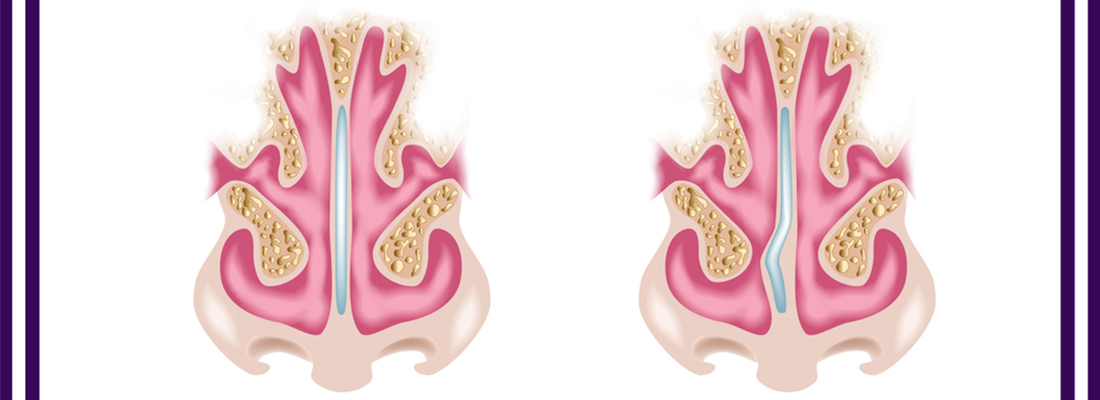If you have nasal obstruction due to a deviated septum, Septoplasty may be the remedy.
What is Septoplasty?
Septoplasty is a surgical procedure performed through the nostrils, to straighten and widen the nasal passages. Depending on the patient’s specific diagnosis, a septoplasty can be performed with rhinoplasty (to reshape the external nose), or sinoplasty (to relieve chronic sinusitis)
What condition does septoplasty remedy?
The primary reason your doctor might recommend septoplasty is to correct a deviated septum. The septum is the interior dividing wall, formed of cartilage, which separates one nostril from the other. Normally, the septum runs straight, and the nasal passages on either side are of similar size and unobstructed. However, sometimes due to injury, and sometimes because of a congenital abnormality, the septum is curved, or deviated, in a way that blocks airflow on one side. In some cases, the unequal flow of breath into the upper nasal passages can cause other obstructive conditions, including an enlarged nasal turbinate. Some deviations are complex, even S-shaped, which can obstruct the flow of breath in both nasal airways. Your doctor might arrive at the diagnosis of deviated septum after performing a thorough evaluation of your symptoms and after examining your nose. The nasal exam may include an office procedure called a nasal endoscopy, in which a tiny camera is inserted in your nasal airway to assess the nature of your nasal obstruction.
How is Septoplasty performed?
Septoplasty is performed in an operating room environment under anesthesia. General anesthesia is the common choice, but your doctor can explain the alternate option of local anesthesia. Sptoplasty is usually an outpatient procedure, meaning you can come to the surgery center for the operation, and go home the same day.
During the procedure, your surgeon will access the airway through the nostrils, to straighten misaligned cartilage and bone. The lining (medical term: mucosa) is first lifted off the cartilage and bone. Reshaping the septum sometimes includes removing some cartilage and bone. The lining is then set back into place.
Post-operative care
Following surgery, it’s common to experience mild pain, fatigue, nasal stuffiness, and mild nasal drainage after your surgery. Pain is typically well controlled with oral pain medications. The swelling and stuffiness should begin to improve after the first week. Because the procedure is performed through the nostrils, it’s unusual to have exterior bruising. Some drainage of mucus and blood from your nose is a normal part of the healing process.
Any stitches are likely to be self-dissolving – no return to the doctor for removal. Splints or packing may be positioned inside your nose during the healing process. Your surgeon can let you know how long they might need to stay in place.
Post-operative care may include use of saline sprays or irrigations. Your care team will give you instructions on ways to help make sure you heal quickly and completely.

